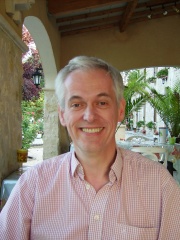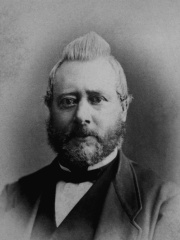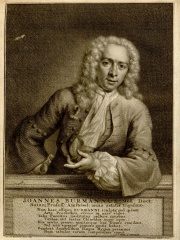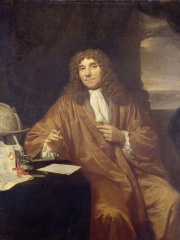
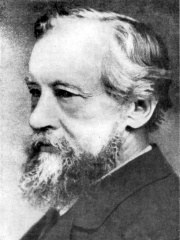
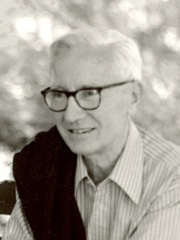
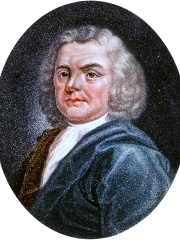
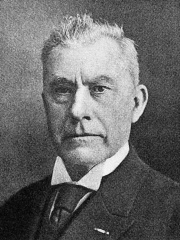
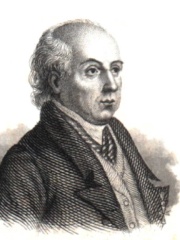
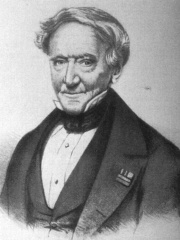
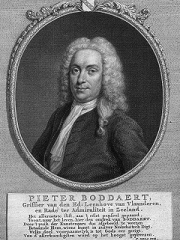
The Most Famous
BIOLOGISTS from Netherlands
This page contains a list of the greatest Dutch Biologists. The pantheon dataset contains 1,097 Biologists, 19 of which were born in Netherlands. This makes Netherlands the birth place of the 9th most number of Biologists behind Russia, and Austria.
Top 10
The following people are considered by Pantheon to be the top 10 most legendary Dutch Biologists of all time. This list of famous Dutch Biologists is sorted by HPI (Historical Popularity Index), a metric that aggregates information on a biography’s online popularity. Visit the rankings page to view the entire list of Dutch Biologists.

1. Antonie van Leeuwenhoek (1632 - 1723)
With an HPI of 78.62, Antonie van Leeuwenhoek is the most famous Dutch Biologist. His biography has been translated into 96 different languages on wikipedia.
Antonie Philips van Leeuwenhoek ( AHN-tə-nee vahn LAY-vən-hook, -huuk; Dutch: [ˈɑntoːni vɑn ˈleːu.ə(n)ˌɦuk] ; 24 October 1632 – 26 August 1723) was a Dutch microbiologist and microscopist in the Golden Age of Dutch science and technology. A largely self-taught man in science, he is commonly known as "the Father of Microbiology", and one of the first microscopists and microbiologists. Van Leeuwenhoek is best known for his pioneering work in microscopy and for his contributions toward the establishment of microbiology as a scientific discipline. Raised in Delft, Dutch Republic, Van Leeuwenhoek worked as a draper in his youth and founded his own shop in 1654. He became well-recognized in municipal politics and developed an interest in lensmaking. In the 1670s, he started to explore microbial life with his microscope. Using single-lensed microscopes of his own design and make, Van Leeuwenhoek was the first to observe and to experiment with microbes, which he originally referred to as dierkens, diertgens or diertjes. He was the first to relatively determine their size. Most of the "animalcules" are now referred to as unicellular organisms, although he observed multicellular organisms in pond water. He was also the first to document microscopic observations of muscle fibers, bacteria, spermatozoa, red blood cells, crystals in gouty tophi, and among the first to see blood flow in capillaries. Although Van Leeuwenhoek did not write any books, he described his discoveries in chaotic letters to the Royal Society, which published many of his letters in their Philosophical Transactions.

2. Hugo de Vries (1848 - 1935)
With an HPI of 65.40, Hugo de Vries is the 2nd most famous Dutch Biologist. His biography has been translated into 46 different languages.
Hugo Marie de Vries (Dutch pronunciation: [ˈɦyɣoː də ˈvris]) (16 February 1848 – 21 May 1935) was a Dutch botanist and one of the first geneticists. He is known chiefly for suggesting the concept of genes, rediscovering the laws of heredity in the 1890s while apparently unaware of Gregor Mendel's work, for introducing the term "mutation", and for developing a mutation theory of evolution.

3. Nikolaas Tinbergen (1907 - 1988)
With an HPI of 65.40, Nikolaas Tinbergen is the 3rd most famous Dutch Biologist. His biography has been translated into 57 different languages.
Nikolaas "Niko" Tinbergen (; Dutch: [ˈnikoːlaːs ˈnikoː ˈtɪnbɛrɣən]; 15 April 1907 – 21 December 1988) was a Dutch biologist and ornithologist who shared the 1973 Nobel Prize in Physiology or Medicine with Karl von Frisch and Konrad Lorenz for their discoveries concerning the organization and elicitation of individual and social behavior patterns in animals. He is regarded as one of the founders of modern ethology, the study of animal behavior. In 1951, he published The Study of Instinct, an influential book on animal behaviour. In the 1960s, he collaborated with filmmaker Hugh Falkus on a series of wildlife films, including The Riddle of the Rook (1972) and Signals for Survival (1969), which won the Italia prize in that year and the American blue ribbon in 1971.

4. Herman Boerhaave (1668 - 1738)
With an HPI of 64.32, Herman Boerhaave is the 4th most famous Dutch Biologist. His biography has been translated into 39 different languages.
Herman Boerhaave (Dutch: [ˈɦɛrmɑn ˈbuːrˌɦaːvə], 31 December 1668 – 23 September 1738) was a Dutch botanist, chemist, Christian humanist, and physician of European fame. He is regarded as the founder of clinical teaching and of the modern academic hospital and is sometimes referred to as "the father of physiology," along with Venetian physician Santorio Santorio (1561–1636). Boerhaave introduced the quantitative approach into medicine, along with his pupil Albrecht von Haller (1708–1777) and is best known for demonstrating the relation of symptoms to lesions. He was the first to isolate the chemical urea from urine. He was the first physician to put thermometer measurements to clinical practice. His motto was Simplex sigillum veri: 'Simplicity is the sign of the truth'. He is often hailed as the "Dutch Hippocrates".
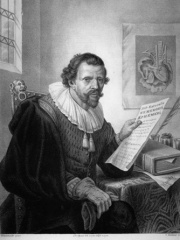
5. Jan Swammerdam (1637 - 1680)
With an HPI of 62.44, Jan Swammerdam is the 5th most famous Dutch Biologist. His biography has been translated into 37 different languages.
Jan or Johannes Swammerdam (February 12, 1637 – February 17, 1680) was a Dutch biologist and microscopist. His work on insects demonstrated that the various phases during the life of an insect—egg, larva, pupa, and adult—are different forms of the same animal. As part of his anatomical research, he carried out experiments on muscle contraction. In 1658, he was the first to observe and describe red blood cells. He was one of the first people to use the microscope in dissections, and his techniques remained useful for hundreds of years.

6. Martinus Beijerinck (1851 - 1931)
With an HPI of 61.74, Martinus Beijerinck is the 6th most famous Dutch Biologist. His biography has been translated into 38 different languages.
Martinus Willem Beijerinck (Dutch pronunciation: [mɑrˈtinʏs ˈʋɪləm ˈbɛiərɪŋk], 16 March 1851 – 1 January 1931) was a Dutch microbiologist and botanist who was one of the founders of virology and environmental microbiology. He is credited with the co-discovery of viruses (1898), which he called "contagium vivum fluidum".

7. Nikolaus Joseph von Jacquin (1727 - 1817)
With an HPI of 60.86, Nikolaus Joseph von Jacquin is the 7th most famous Dutch Biologist. His biography has been translated into 34 different languages.
Nikolaus Joseph Freiherr von Jacquin (16 February 1727 – 26 October 1817) was a scientist who studied medicine, chemistry and botany.

8. Coenraad Jacob Temminck (1778 - 1858)
With an HPI of 60.78, Coenraad Jacob Temminck is the 8th most famous Dutch Biologist. His biography has been translated into 45 different languages.
Coenraad Jacob Temminck (Dutch pronunciation: [ˈkunraːt ˈjaːkɔp ˈtɛmɪŋk]; 31 March 1778 – 30 January 1858) was a Dutch patrician, zoologist and museum director.

9. Pieter Boddaert (1730 - 1795)
With an HPI of 55.08, Pieter Boddaert is the 9th most famous Dutch Biologist. His biography has been translated into 29 different languages.
Pieter Boddaert (1730 – 6 May 1795) was a Dutch physician and naturalist.
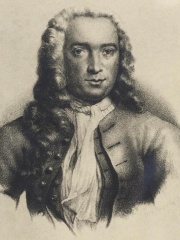
10. Nicolaas Laurens Burman (1734 - 1793)
With an HPI of 53.65, Nicolaas Laurens Burman is the 10th most famous Dutch Biologist. His biography has been translated into 22 different languages.
Nicolaas Laurens Burman (27 December 1734 – 11 September 1793) was a Dutch botanist. He was the son of Johannes Burman (1707–1780). He succeeded his father to the chair of botany at the Athenaeum Illustre of Amsterdam., and at the Hortus Botanicus. He continued the correspondence with Carl Linnaeus, joining him at the University of Uppsala in 1760. He is the author of numerous works including Specimen botanicum de geraniis (1759) and Flora Indica (1768) which was later completed by Johann Gerhard Koenig (1728–1785).
People
Pantheon has 19 people classified as Dutch biologists born between 1534 and 1954. Of these 19, 1 (5.26%) of them are still alive today. The most famous living Dutch biologists include Wim Crusio. The most famous deceased Dutch biologists include Antonie van Leeuwenhoek, Hugo de Vries, and Nikolaas Tinbergen.
Living Dutch Biologists
Go to all RankingsDeceased Dutch Biologists
Go to all RankingsAntonie van Leeuwenhoek
1632 - 1723
HPI: 78.62
Hugo de Vries
1848 - 1935
HPI: 65.40
Nikolaas Tinbergen
1907 - 1988
HPI: 65.40
Herman Boerhaave
1668 - 1738
HPI: 64.32
Jan Swammerdam
1637 - 1680
HPI: 62.44
Martinus Beijerinck
1851 - 1931
HPI: 61.74
Nikolaus Joseph von Jacquin
1727 - 1817
HPI: 60.86
Coenraad Jacob Temminck
1778 - 1858
HPI: 60.78
Pieter Boddaert
1730 - 1795
HPI: 55.08
Nicolaas Laurens Burman
1734 - 1793
HPI: 53.65
Pieter Bleeker
1819 - 1870
HPI: 52.62
Johannes Burman
1707 - 1779
HPI: 50.60
Overlapping Lives
Which Biologists were alive at the same time? This visualization shows the lifespans of the 12 most globally memorable Biologists since 1700.

